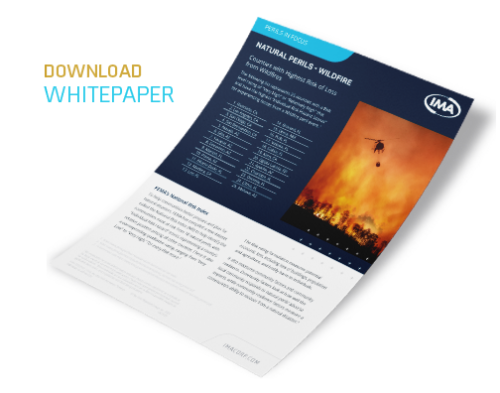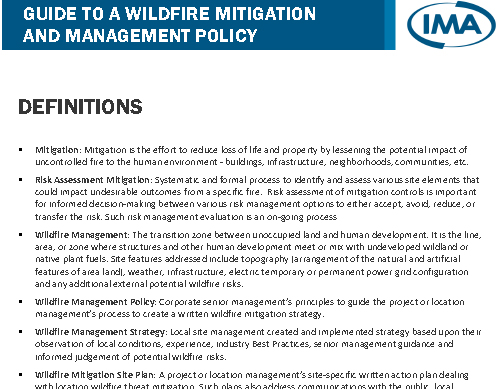Natural Perils
Wildfire
Perils in Focus | Wildfires
Counties with Highest Risk of Loss from Wildfires
The following list represents 25 counties with a Risk level rating of “Very High” or “Relatively High” that and have the highest “Individual Risk Hazard Scores” for experiencing losses from a Wildfire peril event.1
1. Riverside, CA
2. Los Angeles, CA
3. San Diego, CA
4. San Bernardino, CA
5. Navajo, AZ
6. Gila, AZ
7. Yavapai, AZ
8. Coconino, AZ
9. Marion, FL
10. Prima, AZ
11. Miami-Dade, FL
12. Madera, CA
13. Lee, FL
14. Brevard, FL
15. Otera, NM
16. Polk, FL
17. Volusia, FL
18. Collier, FL
19. Kern, CA
20. Oglala Lakota, SD
21. Apache, AZ
22. Charlotte, FL
23. Osceola, FL
24. Citrus, FL
25. Mohave, AZ
FEMA’s National Risk Index
To help communities better prepare and plan for natural disasters, FEMA has compiled a new dataset called the National Risk Index (NRI) to help identify the communities most at risk from 18 natural perils, with “Individual Risk Hazard” scores representing a county’s relative position among all other counties. There is also a corresponding qualitative rating, ranging from “Very Low” to “Very High,” for every Risk score.2
The Risk rating formulation measures potential economic loss, including loss of buildings, population and agriculture, and bodily harm to individuals. It also measures community factors and community resilience. Community factors look at how well the local community responds to natural perils’ adverse impacts, while community resilience factors measure a community’s ability to recover from a natural disaster.3
Resources
Further Reading
For more location specific information, check with your local fire department or utility company.
1. https://www.fema.gov/sites/default/files/documents/fema_national-risk-index_primer.pdf
2. https://www.fema.gov/flood-maps/products-tools/national-risk-index
3. https://www.fema.gov/sites/default/files/documents/fema_national-risk-index_primer.pdf
Please be advised that this whitepaper is an educational and informational resource only. The views and statements expressed herein are not to be construed as legal advice from the authors or IMA and such communication is not protected under the attorney client privilege. Recipients should seek specific legal advice from competent legal counsel of your choice.



